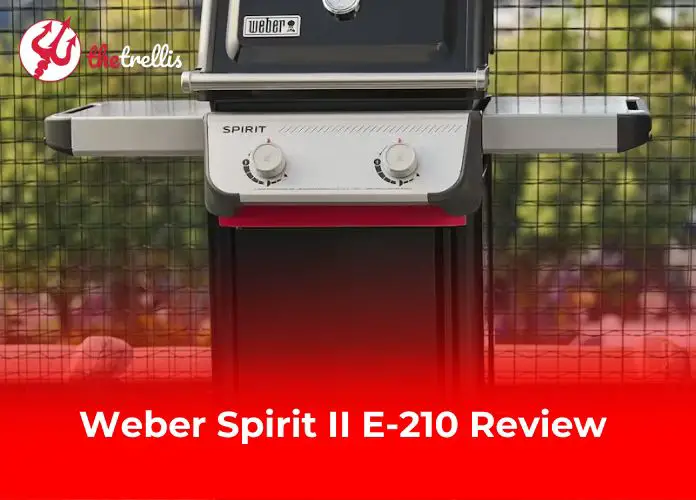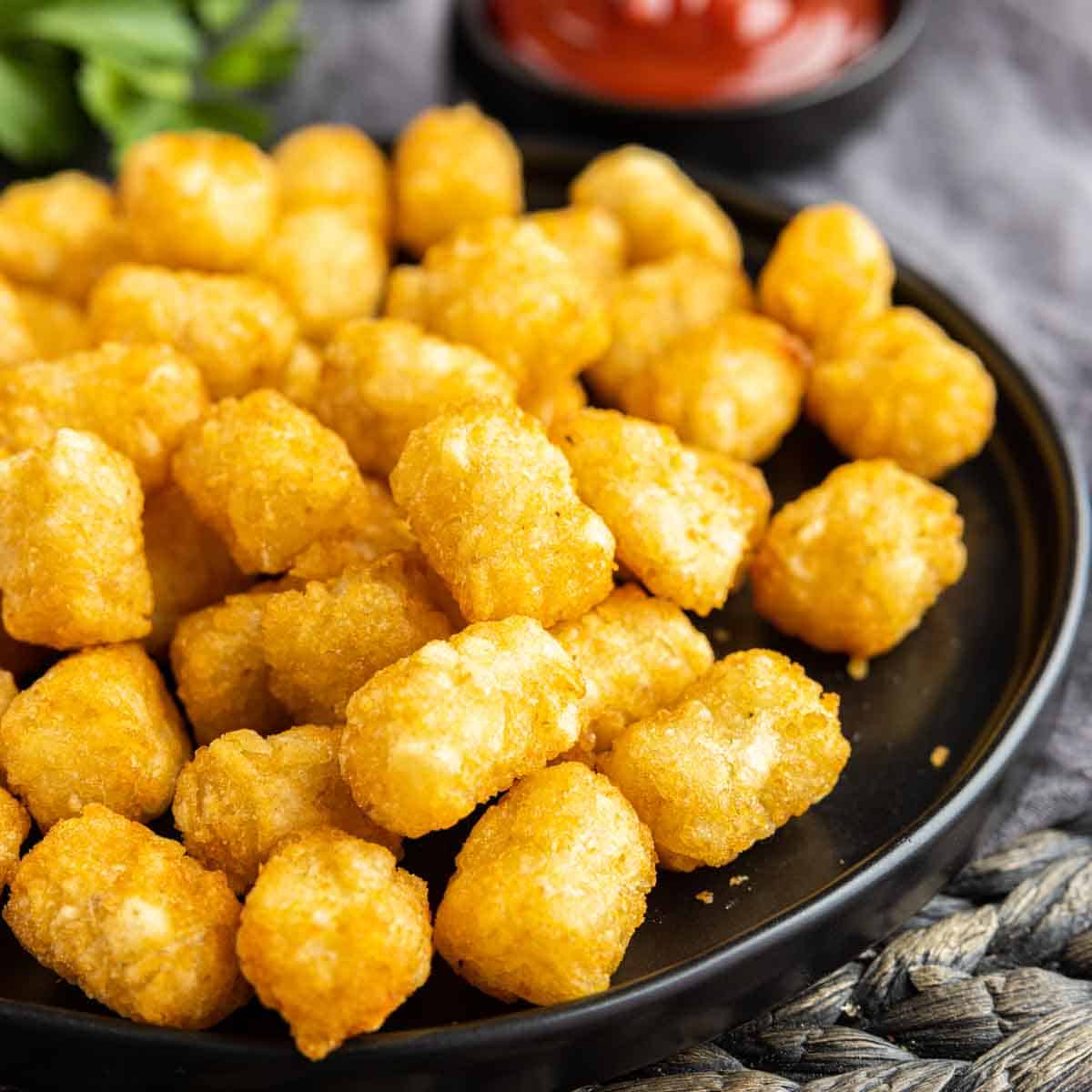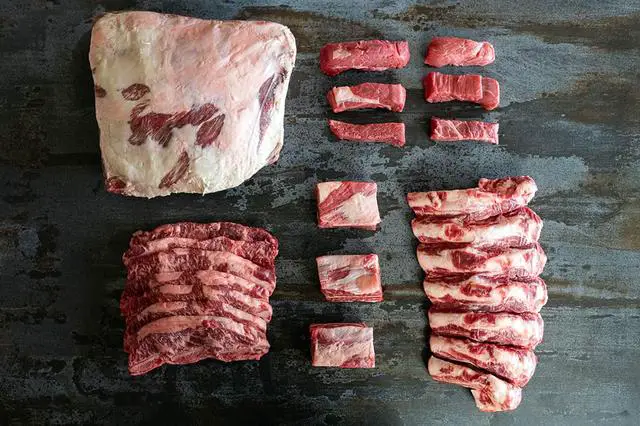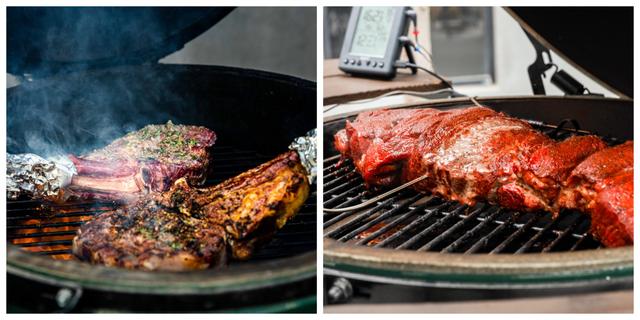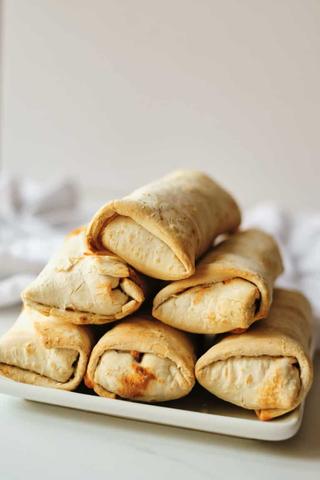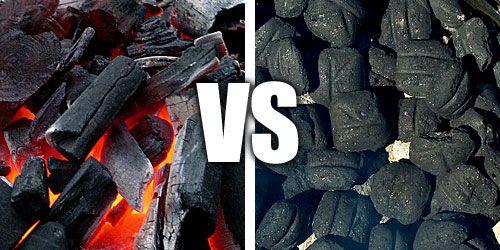
“Unlock the Natural Flavors of Grilling with Wood Charcoal – Elevate your barbecues and cooking experience with our high-quality wood charcoal, crafted to perfection for enhanced smoky flavors. Discover the secret to mouthwatering dishes that will impress your guests and elevate your culinary skills. Ignite the fire within and indulge in the authentic taste of grilling, only with our premium wood charcoal.”
Lump Charcoal vs Briquettes: Which is Best?

When it comes to grilling and smoking, the debate between lump charcoal and briquettes is a hot topic among BBQ enthusiasts. For those new to the community, it can be difficult to decide which option is best and understand the differences between the two. Personally, I believe that the cheapest option is usually the best.
Lump charcoal is made by heating wood in a low-oxygen environment, resulting in carbonized wood. It burns longer, more uniformly, and cleaner than seasoned wood. It is often considered the more “traditional” option because it contains only carbonized wood. Lump charcoal can be made from saw mill scraps or unprocessed limbs and branches. However, it’s important to be aware of the source of the wood used for lump charcoal, as certain types of wood scraps may contain chemicals from stains or finishes.
Briquettes, on the other hand, are made from a combination of materials including wood particles, mineral char, sawdust, and chemical additives. They are pressed together with a mold to form uniform briquettes. While they may contain additives for shaping and easier lighting, natural options made from hardwoods with a cornstarch binder are also available.
Both lump charcoal and briquettes can reach high temperatures without any issues. The type of grill or smoker you use won’t affect your fuel options significantly. However, kamado grills may benefit from using lump charcoal due to its lower ash production compared to briquettes.
Ultimately, the choice between lump charcoal and briquettes comes down to personal preference and budget. Both options have their pros and cons when it comes to burn rate, ash production, and even taste of food. It’s important to experiment with different fuels and find what works best for your grilling and smoking needs.
What is Wood Charcoal?
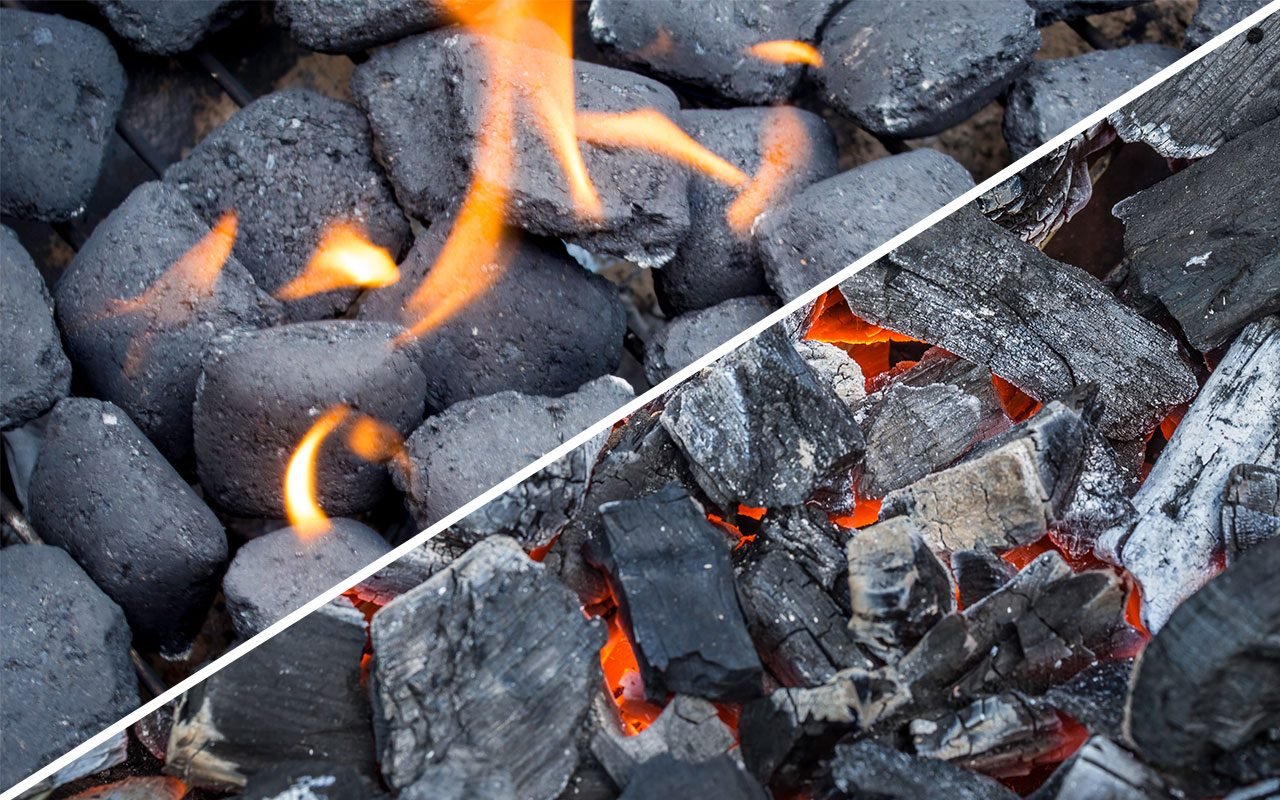
Wood charcoal is a type of charcoal that is made by heating wood in a low-oxygen atmosphere with high heat. This process, called pyrolysis, vaporizes volatile materials like water, methane, and tar into the air. The wood then decomposes into elemental carbon, resulting in a material that burns longer, more uniformly, and cleaner than seasoned wood. Wood charcoal can be made into two forms: lump charcoal and briquettes.
Lump charcoal is considered the more “traditional” option among barbecue enthusiasts. It is made from pieces of wood from saw mills, lumber scraps, or unprocessed limbs and branches. The wood is heated in a closed environment with low levels of oxygen to prevent it from igniting and burning away completely. Lump charcoal is known for its responsiveness to vent and damper adjustment and works well for smoking as well as searing steaks or grilling hamburgers.
Briquettes are another form of charcoal made from a combination of materials such as wood particles, mineral char as a heat source, and sawdust to aid ignition. These materials are pressed together with a mold to form one briquette. Chemical additives are often added to enhance shape formation, make lighting easier, and control burn rates. Some briquettes may also be sprayed with a hydrocarbon solvent before being bagged for instant lighting purposes.
The main difference between lump charcoal and briquettes lies in their composition and manufacturing process. Lump charcoal consists solely of carbonized wood without any additives, while briquettes contain additional ingredients like binders and igniting agents. Lump charcoal tends to be more responsive to vent and damper adjustments, making it a popular choice for smoking and grilling. Briquettes, on the other hand, offer consistency in burn rate and shape due to their manufactured nature.
When choosing between lump charcoal and briquettes, there are a few factors to consider. The type of wood used in lump charcoal can vary, with unprocessed wood being preferred over scraps from flooring that may contain chemicals. All-natural briquettes made from hardwoods with a cornstarch binder are also available but come at a comparable price to lump charcoal. The type and quality of charcoal used can affect burn rate, ash production, and even the taste of the food cooked. Ultimately, personal preference and specific grilling/smoking needs should guide the choice of charcoal.
Oxygen plays a crucial role in fueling fire, regardless of whether lump charcoal or briquettes are used. The regulation of temperature in grills or smokers is primarily achieved through adjusting intake and exhaust vents to control airflow. Closing these vents entirely can lead to a build-up of combustion gases and prevent oxygen from entering the system, causing the charcoal grill to “shut down.” Both lump charcoal and briquettes can reach high temperatures without issue when arranged properly within the grill.
The amount of ash produced by charcoal can impact airflow within the grill or smoker. Lump charcoal generally produces less ash compared to briquettes, which can block airflow and result in a colder fire. Ceramic grills like kamado grills have limited space for ash byproducts, so using lump charcoal is often recommended as it produces less ash. However, all-natural briquettes without additives can also work well if excessive ash production is a concern.
Some individuals prefer to avoid self-igniting or “match-light” charcoal due to the potential taste of chemical solvents. Alternative methods for lighting charcoal include using fire starters like paraffin wax or compressed cardboard, a butane torch, or a charcoal chimney. A charcoal chimney is an affordable tool that makes lighting charcoal easy and efficient.
There is a common belief that lump charcoal burns hotter than briquettes, but this is not necessarily true. Experiments have shown that both forms of charcoal can reach temperatures above 600-750F without issue. The irregular shape of lump charcoal can fill gaps and stifle airflow, while briquettes tend to burn hotter due to their consistent shape. However, for home grilling purposes, the difference in heat output between lump charcoal and briquettes is minimal.
Lump Charcoal
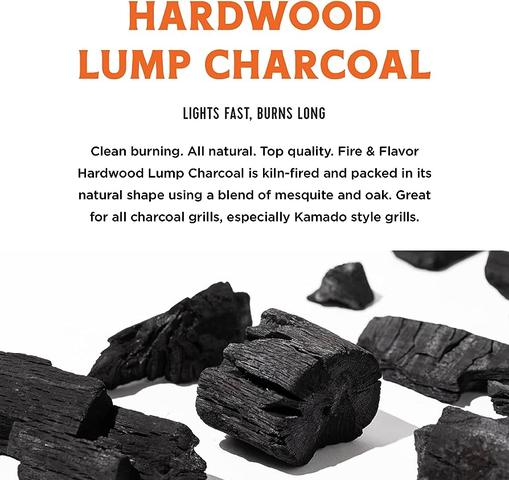
Lump charcoal is made from pieces of wood that are heated in a low-oxygen environment, resulting in carbonized wood. It is often considered the more “traditional” option for grilling and smoking. Lump charcoal burns longer, more uniformly, and cleaner than seasoned wood. It is also lighter in weight compared to its original form.
The wood used to make lump charcoal can vary. It is typically sourced from saw mills, lumber scraps, or unprocessed limbs and branches. While unprocessed wood like limbs and branches are not tainted by anything, scraps from flooring could potentially contain chemicals from stains or finishes. It’s important to be aware of the source of the wood used in lump charcoal to ensure its quality.
Lump charcoal works well for smoking and responds well to vent and damper adjustment. It is also suitable for searing steaks or grilling hamburgers. Some popular brands of lump charcoal include B&B, Jealous Devil, and FOGO.
Lump Charcoal Pros
1. Longer Burn Time: Lump charcoal burns longer than other types of charcoal, allowing for extended cooking times without having to add more fuel.
2. Cleaner Burning: Lump charcoal produces less ash compared to briquettes, resulting in easier cleaning after grilling or smoking.
3. Natural Flavor: Lump charcoal is made solely from carbonized wood, providing a more authentic and natural flavor to the food being cooked.
4. Versatile Cooking: Lump charcoal is suitable for both low and slow cooking as well as high-heat grilling, making it a versatile option for various cooking techniques.
5. Quick Ignition: Lump charcoal ignites quickly and reaches high temperatures faster than briquettes, reducing the waiting time before starting to cook.
Lump Charcoal Cons
1. Inconsistent sizing: Lump charcoal can vary in terms of sizing, depending on the brand. The bag may contain small, medium, and large pieces, which can make it challenging to achieve consistent heat distribution.
2. Limited availability: Lump charcoal is not as widely available as briquettes. It may be more difficult to find in certain areas or at certain times of the year.
3. Higher cost: Lump charcoal tends to be more expensive than briquettes. This can be a deterrent for those on a tight budget or for those who use charcoal frequently.
Briquettes
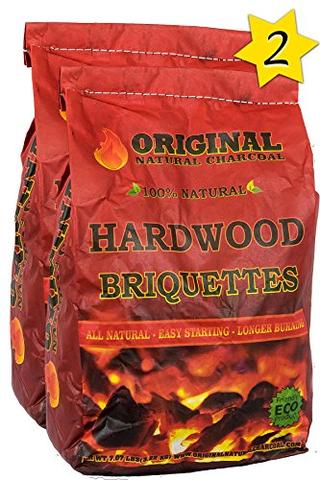
A charcoal briquette is made from a combination of several materials. For example, wood particles, mineral char (heat source), and sawdust (helps with ignition). These materials are then pressed together with a mold to form one briquette. Chemical additives are also commonly added to the mixture. The additives help with things like taking shape, making lighting easier, and controlling burn rates. It’s also not uncommon for “match-light” or “instant-light” varieties to be sprayed with a hydrocarbon solvent before being bagged.
Briquette Pros
– Briquettes are manufactured for consistency in terms of burn rate and shape.
– They can contain additives used for binding and igniting purposes, making them easier to light.
– Briquettes tend to burn hotter than lump charcoal due to their regular shape, which allows for better airflow.
Briquette Cons
1. Additives: Briquettes often contain chemical additives that help with shaping, igniting, and controlling burn rates. Some people may prefer to avoid these additives for health or flavor reasons.
2. Ash Production: Briquettes can produce more ash compared to lump charcoal. This increased ash production can affect airflow and make it harder to maintain a consistent temperature in your grill or smoker.
3. Less Natural Flavor: Some BBQ enthusiasts believe that briquettes can impart a slightly different flavor compared to lump charcoal. While this may not be noticeable to everyone, those who value a natural wood smoke flavor may prefer lump charcoal.
Lump Charcoal vs Briquettes
When it comes to choosing between lump charcoal and briquettes for grilling or smoking, there is a great debate among BBQ enthusiasts. Lump charcoal is considered the more traditional option as it is made solely from carbonized wood, while briquettes contain charcoal and additives. Lump charcoal is made from pieces of wood heated in a low-oxygen environment, resulting in a clean-burning and lightweight fuel. However, the concern with lump charcoal lies in the type of wood used, as some may contain chemicals from finishes or stains. On the other hand, briquettes are made by combining wood particles, mineral char, sawdust, and additives to form uniform shapes. While both types of charcoal can reach high temperatures and be used for grilling or smoking, the choice ultimately depends on personal preference and budget.
The key to controlling heat output when using either lump charcoal or briquettes is regulating airflow. Both types of fuel require oxygen to burn efficiently, so adjusting intake and exhaust vents on your grill or smoker will determine the temperature inside. Contrary to popular belief, there are no significant differences in heat output between lump charcoal and briquettes when properly ignited. The way you arrange your charcoal can also affect heat distribution on your grill; different fire configurations can provide direct or indirect heat zones for cooking food.
The choice between lump charcoal and briquettes may also depend on the type of grill you have. Kamado grills, which have limited space for ash accumulation, typically recommend using lump charcoal due to its lower ash production. However, all-natural briquettes can also work well if they do not contain additives that increase ash production. It’s important to consider personal preferences and taste when selecting a fuel source, as some people may find the chemical taste of self-igniting or match-light charcoal unpleasant. There are alternative methods for lighting charcoal, such as using fire starters or a charcoal chimney, which can provide a cleaner and more natural ignition process.
Charcoal is Fueled by Air
One of the key factors in determining the heat output of charcoal is the amount of oxygen it receives. Oxygen is what feeds fire, and controlling the airflow can regulate the temperature of your grill or smoker. By adjusting the intake and exhaust vents, Pitmasters can increase or decrease the amount of oxygen entering the system, resulting in a hotter or cooler fire.
Lump charcoal and briquettes are two distinct forms of charcoal with their own unique characteristics. Lump charcoal is made purely from carbonized wood, while briquettes are made from a combination of wood particles, mineral char, sawdust, and additives. Lump charcoal tends to burn longer, more uniformly, and cleaner than seasoned wood, making it ideal for smoking or grilling. On the other hand, briquettes are manufactured for consistency in terms of burn rate and shape.
Contrary to popular belief, both lump charcoal and briquettes can reach high temperatures without an issue. There are almost no circumstances where your grill will exceed 600-750F, regardless of fuel type. The way you arrange your charcoal and regulate airflow through intake and exhaust vents will have a greater impact on heat output than the type of fuel you choose.
Ash production can affect airflow in your grill or smoker. Ash can block airflow and make your fire colder. Kamado grills with limited ash space may benefit from using lump charcoal as it produces less ash compared to briquettes. However, all-natural briquettes without additives can also work well if ash production is a concern.
Instead of using self-igniting or “match-light” charcoal, there are several alternatives for lighting your charcoal. Fire starters such as paraffin wax, compressed cardboard, or tumbleweeds can be used. A butane torch or a charcoal chimney can also make lighting charcoal easier and more convenient.
Experiments have shown that briquettes tend to burn hotter than lump charcoal due to their consistent shape and ability to fill gaps, allowing for better airflow. This challenges the common belief that lump charcoal burns hotter than briquettes. However, in most home cooking scenarios like searing a steak, both types of charcoal can reach the desired temperatures effectively.
Fire Arrangement
When it comes to arranging your charcoal for grilling or smoking, there are various methods that can affect the heat and cooking style. One popular method is the two-zone fire, which creates a convection of heat and a radiant heat zone. This is commonly used when smoking meat on a charcoal grill. Another method is the minion method, where charcoal is arranged in a ring around the edge of the grill and lit in one spot. This allows for a slow and steady burn as the lit coals ignite the unlit ones. The charcoal snake method involves stacking briquettes or lump charcoal in a spiral shape around the perimeter of the grill. As the fire progresses along the snake, it provides consistent heat for longer cooking sessions.
It’s important to note that regardless of fuel type, both lump charcoal and briquettes will self-ignite and be fueled by oxygen. The type of grill or smoker you use typically doesn’t affect your choice of fuel, although kamado grills may benefit from using lump charcoal due to its lower ash production.
The Type of Grill
Different types of grills, such as charcoal grills and smokers, can accommodate both lump charcoal and briquettes. However, kamado grills, which are smaller and have less space for ash byproduct, are often recommended to use lump charcoal because it produces less ash. Briquettes can still work on kamado grills if they are all-natural without additives that increase ash production.
There are various alternatives to using lighter fluid when lighting charcoal, including fire starters like paraffin wax or compressed cardboard, a butane torch, or a charcoal chimney. Many BBQ enthusiasts prefer using a charcoal chimney because it is affordable and makes lighting charcoal easy. It is important to avoid self-igniting or “match-light” charcoals as they may leave a chemical taste when grilling.
Contrary to popular belief, lump charcoal does not burn hotter than briquettes in most home cooking scenarios. Experiments conducted by Greg Blonder using a charcoal chimney showed that briquettes tend to burn hotter than lump charcoal due to their consistent shape and ability to fill gaps and stifle airflow better. The temperature range for briquettes was 1700 – 2150F, while the range for lump charcoal was 1400 – 1800F.
Lump charcoal is made solely from carbonized wood without any additives, while briquettes are made from a combination of materials including wood particles, mineral char as a heat source, sawdust for ignition assistance, and chemical additives for shaping and controlling burn rates. Some briquettes may also be sprayed with hydrocarbon solvents before being bagged.
When choosing lump charcoal, it is important to consider the type of wood used to make it. Unprocessed wood like limbs, branches, and scraps from saw mills are generally safe, but scraps from finished flooring may contain chemicals from stains or finishes. It is best to contact the company if unsure about the wood source. Lump charcoal brands such as B&B, Jealous Devil, and FOGO are well-regarded options for smoking and grilling.
Briquettes offer consistency in burn rate and shape due to their manufacturing process. They can contain additives for binding and igniting purposes. All-natural briquettes made from hardwoods with a cornstarch binder are available but come at a price comparable to lump charcoal. It is important to roll the bag closed when using match-light or instant-light briquettes to prevent evaporation of solvents.
Regardless of fuel type (lump charcoal or briquettes), pitmasters regulate temperature by adjusting the intake and exhaust vents on their grills. Opening vents allows more airflow and results in a hotter fire, while partially closed dampers reduce air intake and result in a cooler fire. Closing both the exhaust damper and intake prevents oxygen from entering the system and causes the grill to “shut down.”
Lighting Lump Charcoal and Briquettes
When it comes to lighting lump charcoal and briquettes, there are a few different methods you can use. One popular method is using a charcoal chimney, which involves placing a starter cube or crumpled newspaper in the bottom of the chimney and filling the top with charcoal. The cube or newspaper is then lit, which ignites the charcoal from the bottom up.
Another common method is using lighter fluid. This involves pouring a small amount of lighter fluid over the charcoal and allowing it to soak in for a few minutes before lighting it with a match or lighter. It’s important to use caution when using lighter fluid, as it can be flammable and should be stored away from open flames.
Does Lump Charcoal Burn “Hotter” than Briquettes?
In experiments conducted by Greg Blonder, it was found that lump charcoal tends to burn at temperatures ranging from 1400 – 1800F (dull red coal to brighter red), while briquettes burned at temperatures ranging from 1700 – 2150F (early flame to white coals). This suggests that, contrary to popular belief, briquettes actually burn hotter than lump charcoal. The irregular shape of lump charcoal can fill in gaps and stifle airflow, resulting in slightly lower temperatures compared to briquettes.
In conclusion, wood charcoal is a versatile and sustainable fuel source that offers numerous benefits. Its high energy content, long burn time, and low emissions make it an ideal choice for cooking, heating, and industrial purposes. Additionally, the production of wood charcoal supports forest management and reduces waste. While alternative fuels exist, wood charcoal remains a reliable and eco-friendly option for meeting our energy needs.
Learn More About Grilling
If you want to learn more about grilling, check out these other helpful resources!

